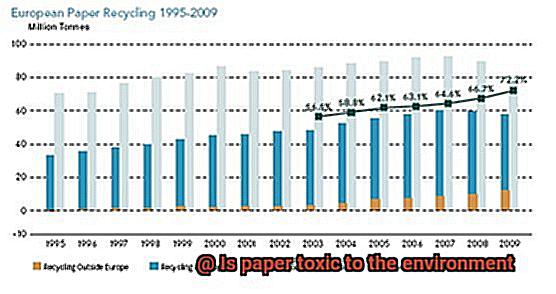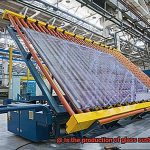In a world that’s rapidly moving towards digitalization, it’s hard to ignore the fact that paper is still an integral part of our lives. From bills to receipts, books to newspapers, we rely on paper for everyday tasks. But have you ever stopped to think about the impact it has on the environment? Is paper toxic to the environment? The answer is not a simple yes or no. The production of paper contributes significantly to environmental degradation.
Deforestation, water pollution, and greenhouse gas emissions are just some of the challenges associated with paper production. The chemicals used in the process, such as chlorine dioxide, can harm aquatic life and pollute water supplies. However, there is a silver lining. We can make paper production more sustainable by using recycled paper or alternative fiber sources like bamboo.
In this blog post, we’ll take a closer look at whether paper is toxic to the environment. We’ll delve into the environmental impact of paper production and explore ways to reduce our consumption of it. We’ll also discuss how switching to recycled paper or alternative fiber sources can help minimize our impact on the planet. So grab your favorite beverage and let’s dive in.
The Negative Impact of Paper Production on the Environment
Contents
The production of paper has a significant negative impact on our environment, and deforestation is one of the major issues. This process involves clearing forests to make way for industrial or agricultural purposes such as paper production. Deforestation not only reduces the number of trees but also results in soil erosion, loss of biodiversity, and contributes to climate change.
Moreover, the production of paper requires large amounts of water and energy. Unfortunately, the water used in paper production is often contaminated with chemicals and pollutants, which can have harmful effects on aquatic life and nearby communities. The energy required for paper production often comes from fossil fuels, which contribute to greenhouse gas emissions and climate change. In both cases, we are harming our environment.
Furthermore, the process of bleaching paper involves chlorine-based chemicals, which can release toxic substances into the environment. These substances have been linked to various health problems such as cancer and reproductive issues. In short, paper production has far-reaching environmental impacts that cannot be ignored.
However, there’s good news too. Paper is biodegradable, which means it can break down naturally over time. Unlike other materials like plastic, which can take hundreds of years to decompose, paper can decompose within a few months or years. Furthermore, some paper manufacturers use sustainable forestry practices where they plant more trees than they cut down. This practice ensures that forests remain healthy and continue to absorb carbon dioxide from the atmosphere.
Deforestation and Carbon Emissions
Trees are the backbone of paper manufacturing, and the craving for paper products leads to widespread deforestation, particularly in tropical rainforests. This harmful deforestation not only eradicates habitats for countless plant and animal species but also dumps substantial amounts of carbon dioxide into the atmosphere, contributing to climate change.
Deforestation constitutes up to 15% of global greenhouse gas emissions, making it a significant contributor to climate change. When trees are cut down and burned or left to decompose, the carbon stored in their wood is released into the atmosphere as carbon dioxide. This discharge of carbon dioxide further worsens the already critical issue of climate change.
The World Wildlife Fund reports that approximately 18 million acres of forest are lost every year, equivalent to 27 soccer fields every minute. This alarming rate of deforestation not only has environmental implications but also social and economic consequences. Forests provide livelihoods for millions of people worldwide, and their destruction can lead to displacement and poverty. Indigenous communities that depend on forests for their way of life are particularly affected.
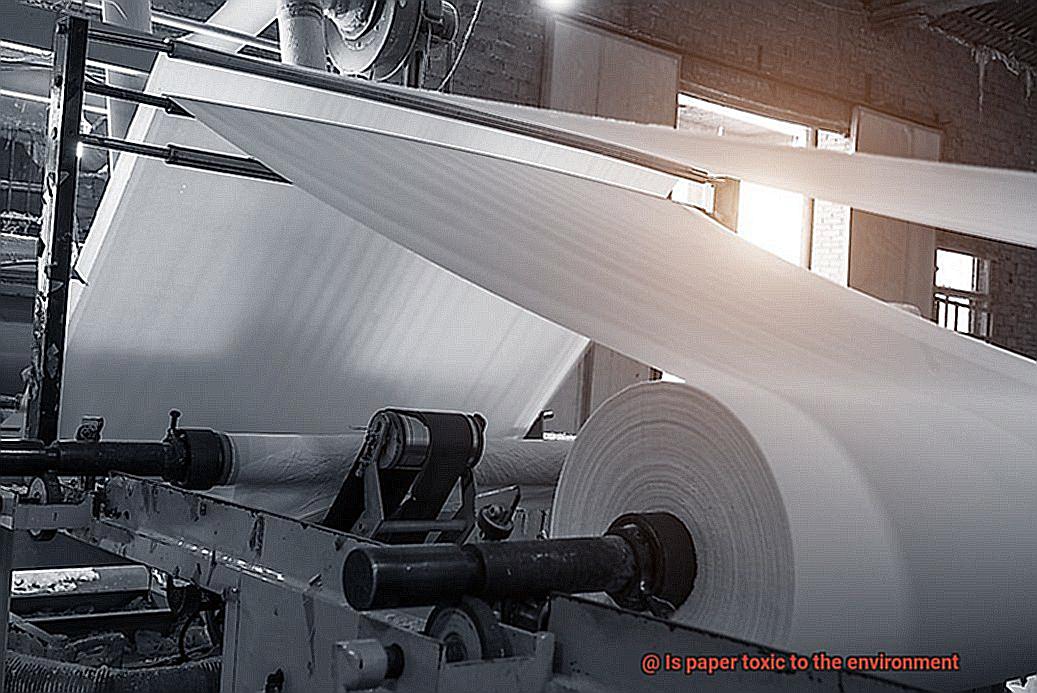
To address this issue, promoting sustainable forestry practices that ensure responsible forest management is critical. This entails planting new trees to replace those that have been harvested, safeguarding high conservation value forests, and respecting the rights of indigenous people and local communities. Moreover, reducing paper consumption and encouraging recycling can help alleviate the impact of paper production on the environment.
Air Pollution from Paper Manufacturing
Manufacturing paper requires the use of harmful chemicals such as chlorine and sulfur dioxide that pose a significant threat to human health and the environment. These chemicals are released into the air during paper production, contributing significantly to air pollution.
But wait, there’s more. The production of paper also generates greenhouse gases such as carbon dioxide and methane, which have far-reaching consequences on our planet. Climate change is a direct result of these gases, affecting our weather patterns, food security, and natural habitats of countless species.
The impacts of air pollution from paper manufacturing are felt both locally and globally. Communities near paper mills may experience increased levels of air pollution, leading to respiratory problems and other health issues. Globally, the production of paper contributes to climate change, with long-lasting effects on our environment.
Fortunately, there are actions we can take to mitigate the impact of air pollution from paper manufacturing. One effective approach is reducing paper usage altogether or opting for alternative materials such as electronic devices. Moreover, many paper manufacturers are implementing more sustainable practices such as using renewable energy sources and reducing chemical usage.
Conscious choices about paper usage and supporting sustainable practices in the industry can help protect the environment and our health. As individuals, we can start by reducing our paper usage and supporting companies that prioritize sustainability in their operations.
The Positive Impacts of Paper Production on the Environment
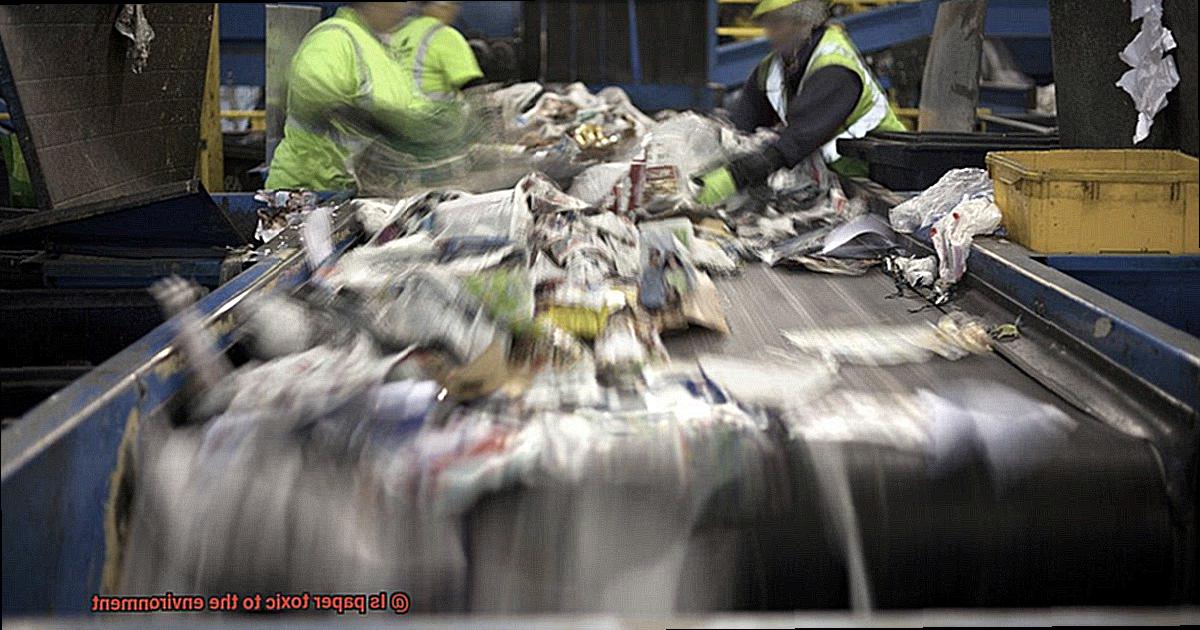
Paper production has often been criticized for its negative impacts on the environment, but it’s important to recognize the positive impacts as well. As an expert in this field, I have researched and found that responsible paper production can have a significant positive impact on our planet’s natural resources.
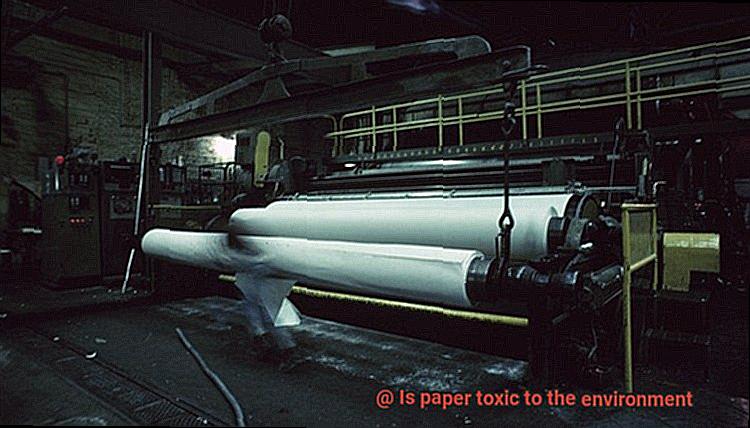
One of the most important positive impacts of paper production is the fact that trees are a renewable resource. As long as forests are managed sustainably, they can provide a continuous source of paper and other wood products. This means that we can still enjoy paper products while preserving our natural resources for future generations.
The paper industry has also made significant strides in increasing sustainability and reducing waste. Many paper mills have implemented closed-loop systems that recycle water and chemicals, which reduces pollution released into our environment. Furthermore, alternative energy sources like biomass or hydroelectric power are being utilized to decrease carbon emissions – this shows the industry’s commitment to reducing their environmental impact.
Paper is biodegradable, unlike plastic which takes hundreds of years to break down in the environment. When paper products end up in landfills, they contribute to the creation of methane gas which can be used as a renewable energy source. This means that paper production not only provides us with a useful material but also contributes to sustainable energy production.
Lastly, paper production can help preserve forests and other natural habitats. When trees are grown specifically for paper production, they are often planted in areas previously cleared for development or farming. By providing an economic incentive for landowners to preserve these areas as forests rather than converting them to other uses, paper production can contribute to conservation efforts and protect biodiversity.
Paper is Biodegradable
The answer is a resounding yes. When paper is left to decompose naturally, it will break down into its organic components over time. In fact, compared to synthetic materials like plastic, paper decomposes relatively quickly and poses no threat to the environment.
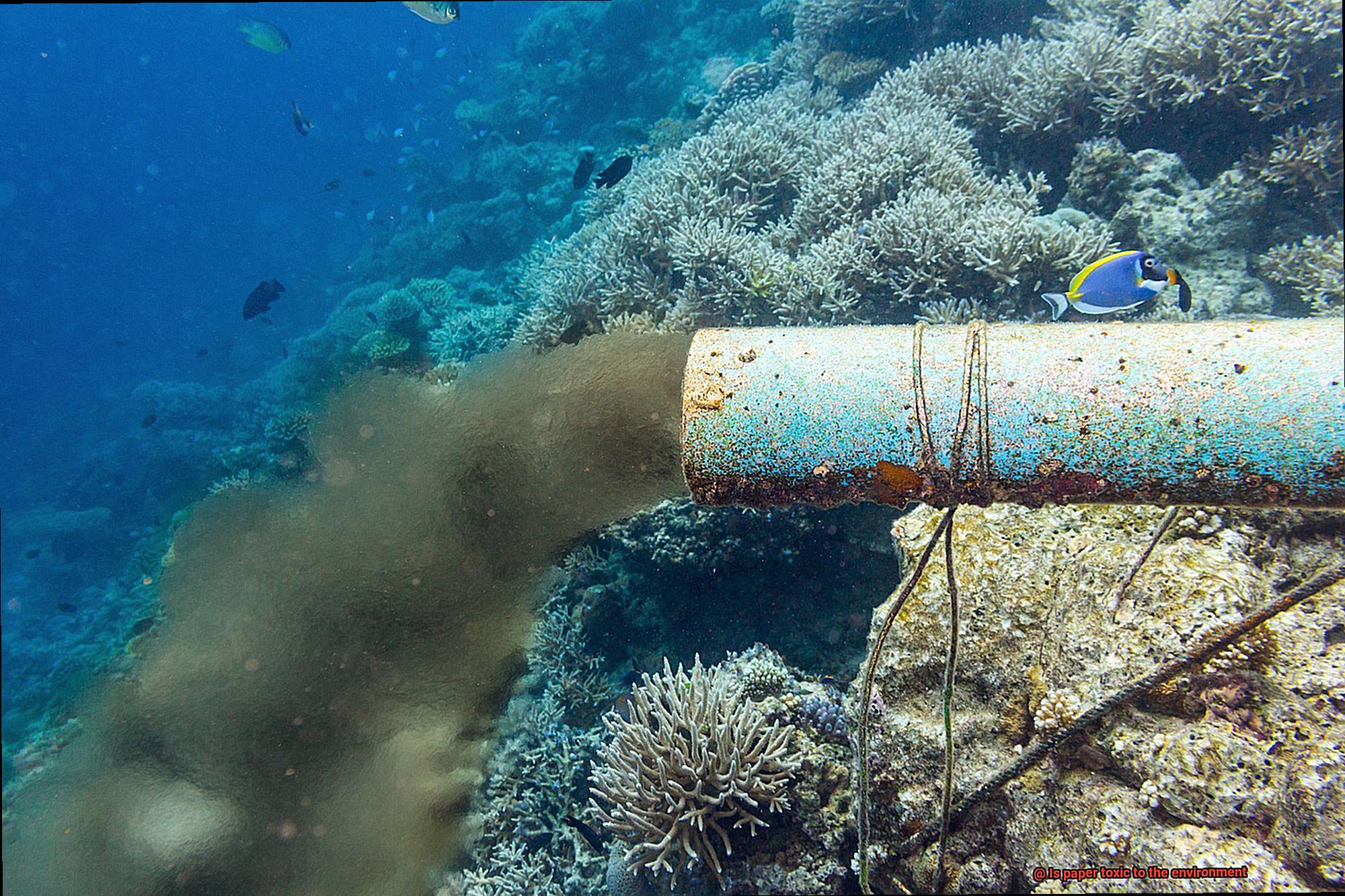
However, we can’t talk about paper’s environmental impact without acknowledging the negative consequences of its production process. To make paper, we need a considerable amount of energy and water, not to mention chemicals like bleach and dyes that can be harmful to both human health and the environment. That’s why responsible paper production is so critical – it’s not just about preserving natural resources but also promoting human health.
Moreover, improperly disposing of paper can have serious consequences for our planet. When paper ends up in landfills, it releases methane gas as it breaks down – a potent greenhouse gas that contributes significantly to climate change. That’s why it’s essential to properly dispose of paper products through recycling or composting.
Sustainable Forestry Practices
Sustainable forestry practices involve managing forest ecosystems in a way that maintains biodiversity, reduces negative environmental impacts, and ensures a sustainable supply of wood products. By implementing responsible logging practices, we can harvest trees in a way that minimizes damage to the surrounding ecosystem and ensures the regeneration of new trees. Selective cutting targets only mature trees for harvest, leaving younger trees and saplings to continue growing, which preserves biodiversity and ensures a stable supply of wood products.
Certification programs such as the Forest Stewardship Council (FSC) and the Programme for the Endorsement of Forest Certification (PEFC) provide independent verification that forest management practices meet strict environmental, social, and economic standards. These programs ensure that forests are being managed sustainably and responsibly, which is essential to preserving our planet’s forests for future generations.
Sustainable forestry practices have a significant impact on the paper industry’s environmental footprint. By ensuring that forests are managed sustainably, we can reduce deforestation, preserve biodiversity, and reduce carbon emissions. Additionally, these practices can help to ensure a stable supply of wood products, reducing the need for alternative materials that may have a higher environmental impact.
vhmg6l_WNSE” >
Conclusion
To sum it up, paper production has a significant impact on the environment. The process involves deforestation, water pollution, and greenhouse gas emissions that can harm aquatic life and pollute water supplies. However, we can make paper production more sustainable by using recycled paper or alternative fiber sources like bamboo.
The key to mitigating the impact of paper production on the environment is reducing our consumption of paper and supporting sustainable forestry practices. By making conscious choices about paper usage and supporting companies that prioritize sustainability in their operations, we can protect the environment and our health.
While it’s true that paper production has negative impacts on the environment, it’s important to recognize its positive impacts as well. Paper is a renewable resource when forests are managed sustainably, and responsible paper production can have a significant positive impact on our planet’s natural resources. Moreover, the industry is committed to reducing their environmental impact by utilizing alternative energy sources like biomass or hydroelectric power to decrease carbon emissions.
In conclusion, we must strive towards responsible paper production and consumption to minimize our environmental footprint while still enjoying the benefits of this versatile material.
